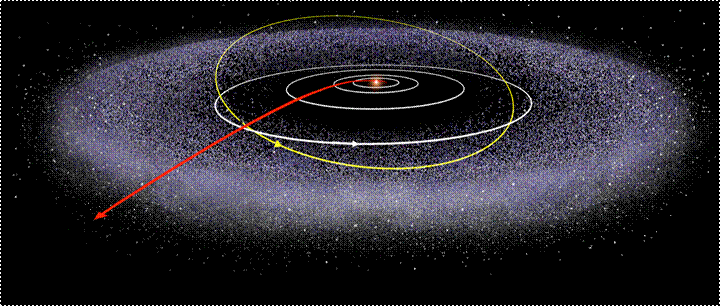Debunking an Urban Legend of Asteroidal Proporti...

There’s an urban legend going around since 2006 that says “asteroids used to be planets, but astronomers discovered they exist in a belt so way back in the mid 1800s the astronomers reclassified them as non-planets. For the same reason, Kuiper Belt objects like Pluto should be non-planets because they, too, are in a belt.” […]
How Big Is a Plan...

I’m sure this is not interesting to most people, but I wanted to get it onto the Internet for those who become interested in Pluto’s planethood during the flyby and want more details. Determining the definition of a planet is really a scientific question. The first step in science is not writing down a hypothesis […]
Planet Tossing and the Kuiper B...

To get ready for the New Horizons flyby of Pluto (this July!), I’m writing a series on the science of Pluto and the Kuiper Belt. Here is the next installment. There are some very strong hints that the planets haven’t stayed in their original orbits and the giant planets tossed around the smaller ones. These […]
The Challenge of Mars Min...

We just completed the 6th annual NASA Robotics Mining Competition, and like always it was awesome! This year, 46 universities from around the United States brought robots to mine the simulated Martian soil and win the coveted Joe Kosmo Award. Every year it has been an amazing success. We have learned valuable lessons that […]
The Dance of the Kuiper B...

The Pluto flyby is a once-in-a-lifetime event, so to get ready I’m writing a series on the Kuiper Belt. This time we’ll look at how solar system bodies are classified by the way they dance. Orbital Resonance The planets’ orbits are affected by something called resonance. When you were a child you learned how to swing […]
Measuring Planets Like S...

About 2300 years ago, a human being measured the world. It was Eratosthenes, the Greek scholar. Imagine how he felt when he first realized what he had done. “Wow, I am the only person who has ever known the size of the world.” It must have been amazing. And humbling. He had noticed that sunlight […]
The Kuiper Belt Awa...

Note: this post (with the previous one) is intended to illustrate how BIG our solar system is by reviewing all the named bodies beyond Neptune. When Pluto was reclassified as ‘not-a-planet’ then people interpreted it to mean the important stuff ends at Neptune. Sadly, most people don’t know about all the worlds our own solar […]
Underworld Party in the Kuiper B...

In July, New Horizons will become the first spacecraft to explore the third zone of the solar system. It’s time we familiarize ourselves with this region of our home star! We know the classical planets’ names and their meanings, but what about the hundreds of newly discovered dwarf planets and thousands of smaller bodies out […]







Recent Comments